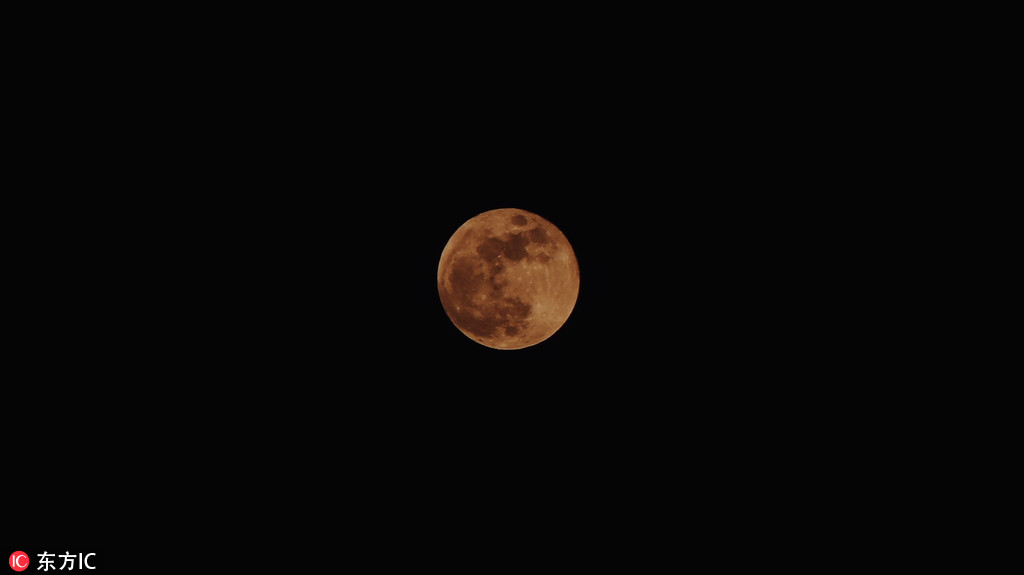Red planet, 'blood moon' to pair up
China Daily | Updated: 2018-07-26 09:39

PARIS - The longest "blood moon" eclipse this century will coincide with Mars' closest approach in 15 years to offer skygazers a thrilling astronomical double bill on Friday, astronomers say.
For about half the world, the moon will be partly or fully in Earth's shadow from 1714 to 2328 GMT - six hours and 14 minutes in all.
It is 27 minutes longer than the "super blue blood moon" that occurred in January.
The period of complete eclipse - known as "totality", when the moon appears darkest - will last from 1930 to 2113 GMT.
"Totality will last for 103 minutes, making it the longest eclipse of the 21st century!" said the Royal Astronomical Society in London.
At the same time, Mars will hover near the moon in the night sky, easily visible with the naked eye.
Our neighboring planet will appear unusually large and bright, a mere 57.7 million kilometers from Earth on its elliptical orbit around the sun.
"We have a rare and interesting conjunction of phenomena," said Pascal Descamps, an astronomer with the Paris Observatory.
"We should have a coppery red tint on the moon with Mars the 'Red Planet' just next to it, very bright and with a slight orange hue itself."
People in Australia, Asia, Africa, Europe and South Africa will witness either the full eclipse or a partial eclipse, depending on the weather, US space agency NASA said.
Celestial bodies align
A total lunar eclipse happens when Earth takes position in a straight line between the moon and sun, blotting out the direct sunlight that normally makes our satellite glow whitish-yellow.
The moon travels to a similar position every month, but the tilt of its orbit means it normally passes above or below the Earth's shadow - so most months we have a full moon without an eclipse.
When the three celestial bodies are perfectly lined up, however, the Earth's atmosphere scatters blue light from the sun while refracting or bending red light onto the moon, usually giving it a rosy blush.
This is what gives the phenomenon the name "blood moon", though Mark Bailey of the Armagh Observatory in Northern Ireland said the color can vary greatly.
It depends partly on "how cloudy or transparent those parts of the Earth's atmosphere are which enable sunlight to reach the moon", he said.
"During a very dark eclipse the moon may be almost invisible. Less dark eclipses may show the moon as dark gray or brown ... as rust-colored, brick-red, or, if very bright, copper-red or orange."
NASA, meanwhile, has called out social media hoaxers claiming that Mars will appear as big as the moon during the eclipse.
"If that were true, we'd be in big trouble given the gravitational pulls on Earth, Mars and our moon," the NASA website said.
Afp - Xinhua
























